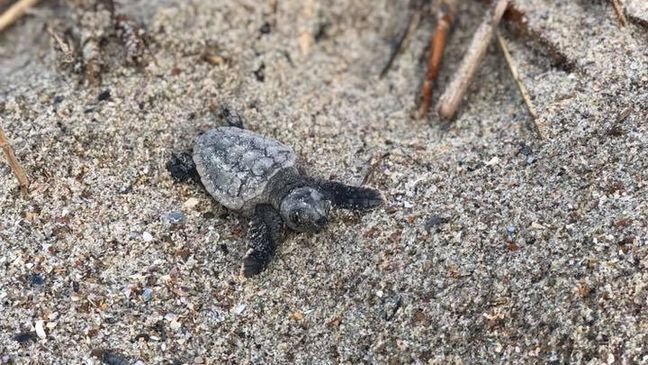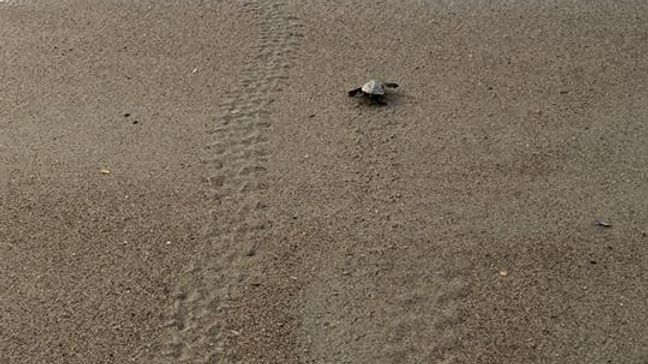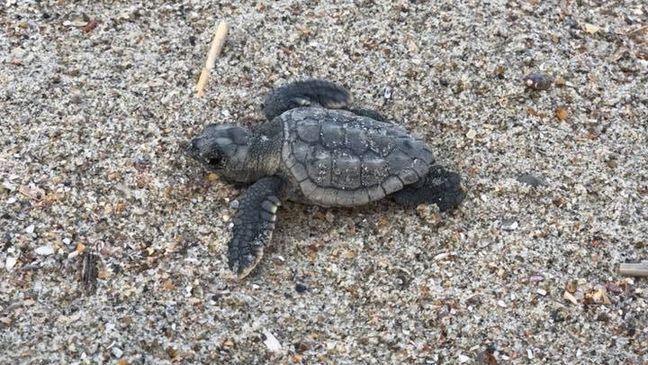WATCH | Sea turtles hatch, scamper toward ocean in rare daylight event on SC beach
EDISTO BEACH, S.C. (WCIV) - People walking along the sands of Edisto Beach early Sunday morning were treated to a unique display of nature at work.
More than 100 sea turtle hatchlings emerged from the sand and slowly scampered their way toward the waves.
The rare daylight event was captured on video by Edisto Beach Turtle Patrol volunteer member Courtney Beeks.
She believes this was the first nest in South Carolina to hatch this year.
"It was nest No. 1 at Edisto, at least," Beeks added.
The hatchlings began to emerge around 7 a.m. Beeks says her volunteer group typically sees a hatching around 9 p.m.
"The nests typically do not hatch until around at least dusk, so, usually, it is very hard to get a good picture or video of the boil because it is dark outside," she added.
Hatchlings typically follow light reflecting from the ocean and the slope of the beach to guide them toward the water, according to NOAA and the South Carolina Department of Natural Resources.
So, why is this hatching referred to as a boil? Picture a pot on the stove.
"When the tiny turtles are ready to hatch out, they do so virtually in unison, creating a scene in the sandy nest that is reminiscent of a pot of boiling water," according to the NOAA's National Ocean Service.
A lucky crowd of early morning beach-goers gathered on each side of the tiny turtles Sunday to watch the rare daylight event. "The crowd absolutely loved it," Beeks said. Video shows the turtles reaching the water.
The hatchlings were loggerheads. The SCDNR says loggerheads are the most common species found in South Carolina.
"Once they reach the ocean, they swim continuously for about 36 hours to escape predators that may prey on them in coastal waters," according to SCDNR. "They swim offshore in search of large clumps of Sargassum seaweed where they are camouflaged while feeding on a variety of small invertebrates."




